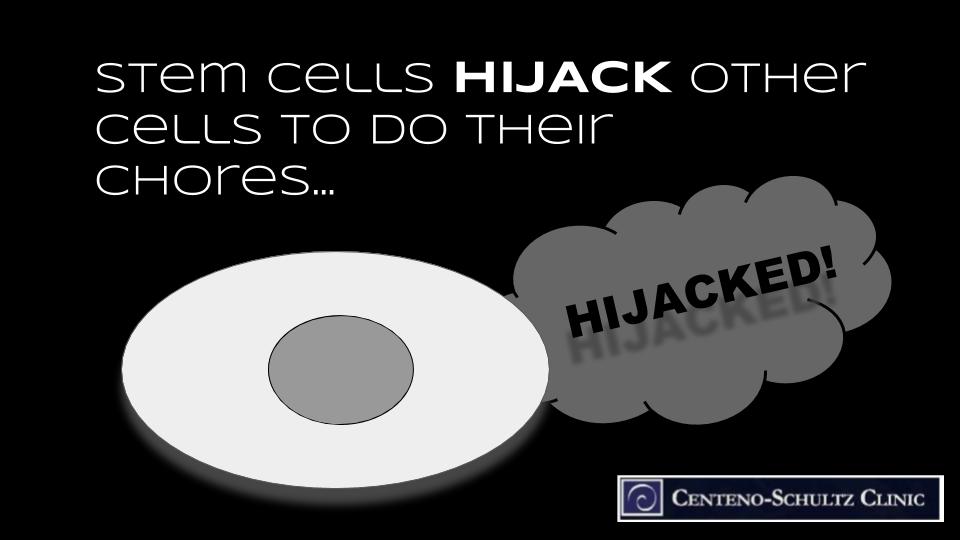Today, in our fourth installment of our “Let’s Talk Stem Cells” series, we’re going to talk about how stem cells hijack other cells to make them do the stem cells’ chores. They do this by targeting other cells and firing exosomes at these cells. So what in the world is an exosome? Let’s start there.
What Are Exosomes?
In “Let’s Talk Stem Cells Part 3: Delegating Repair Tasks to Other Cells,” we explained that stem cells release cytokines, which signal other cells. These cytokines, or proteins, can not only just communicate with other cells but can also tell other cells what to do. As explained in that post, this is one way stem cells coordinate a repair process using other cells (i.e., paracrine signaling). We’re digging much deeper into this specific step of the process today by exploring mRNA-carrying cytokines called exosomes.
Exosomes live on the stem cell’s outer wall and are tiny packets that contain everything from proteins to RNA, but today we’re focusing on one specific thing they carry, and that is messenger RNA (mRNA). You can think of mRNA as the instruction manual for certain proteins (including chemical signals, building blocks, etc.) and the cells that make them. So, in short, mRNA is the template for building proteins. Learn more about this by watching Dr. Centeno’s video on exosomes below:
Exosomes Turn Other Cells into Protein-Building Factories
When the stem cell targets a cell, it fires mRNA-carrying exosomes at the cell. Once the exosomes reach the cell, they deliver their mRNA into the cell, which forces the cell to make proteins the stem cell needs, essentially turning the targeted cell into a protein-building factory.
Exosomes vs. Stem Cells for Orthopedic Treatment
Since we can harvest stem cells and use them to treat orthopedic conditions, you might be wondering if we can do the same with exosomes. Due to their cytokine and mRNA content, which can stimulate repair, exosomes have been proposed as a treatment. But here’s the problem: Exosomes have to be harvested from the growth media when stem cells are being cultured or growing. This is not permitted in the United States as this is considered a cell drug.
You might encounter clinics marketing exosome therapy with exosomes retrieved from amniotic fluid—please note that this, too, is not permitted as it, too, is an unapproved drug therapy. Stay away from these clinics.
Legalities aside, exosomes are not better than stem cells for orthopedic treatment! While an exosome might be a missile, the stem cell is the intelligence behind which missiles to fire at which target and when. So even if we could simply harvest and inject exosomes, without the stem cell to direct them, they’d have no idea where to go or when to go there once they were injected. For more detail on this, watch the video below:
The idea that stem cells hijack other cells and turn them into robotic protein-producing factories sounds like something out of a futuristic sci-fi novel, but it’s a process taking place in our bodies each and every day. We’re still at the early stages of exploration when comes to discovering all that our stem cells are capable of, and exosomes are the new kids on the cellular biology block. Join us on Monday when we’ll cover another exciting way our stem cells work, in Let’s Talk Stem Cells Part 5.
